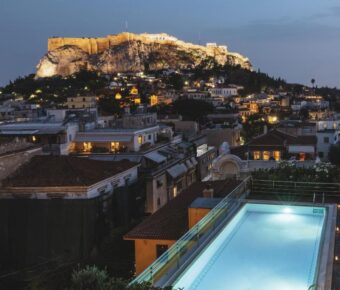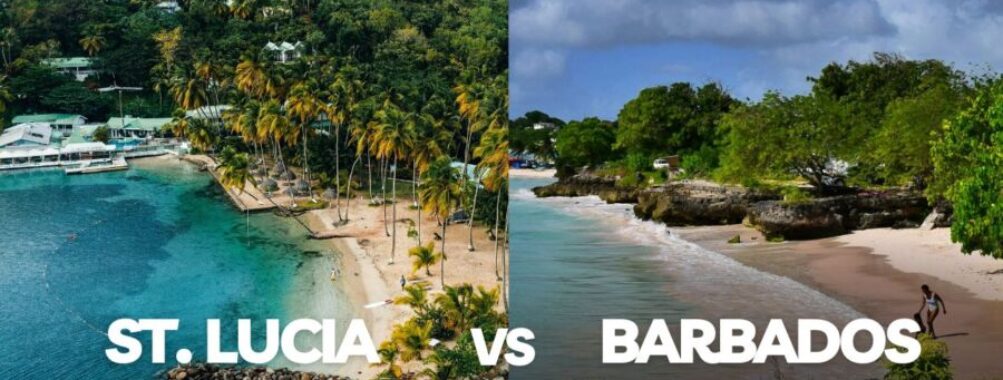
St. Lucia vs Barbados: 7 Key Differences to Help You Choose Your Dream Caribbean Getaway in 2025
When choosing between St. Lucia and Barbados for your Caribbean getaway, you choose between two stunning but distinctly different island experiences.
St. Lucia wins in natural beauty with its dramatic mountains and lush landscapes, while Barbados offers better white sand beaches and clearer waters. Size-wise, they’re comparable, with Barbados being slightly smaller at about 166 square miles, making it potentially easier to explore during a short vacation.
Budget-conscious travelers might prefer St. Lucia, which tends to be more affordable than Barbados, for accommodations and activities. However, both islands feature properties ranging from budget-friendly to ultra-luxurious resorts. Your choice ultimately depends on whether you prefer St. Lucia’s mountainous terrain with scenic views or Barbados’ easier navigation and pristine beaches.
Contents
- Geographical Overview
- Location and Size
- Terrain and Landscapes
- Cultural Insights
- Historic Significance
- Festivals and Events
- Travel Essentials
- Best Time to Visit
- Accommodation Options
- Food and Dining Experience
- Activities and Attractions
- Beaches and Water Activities
- Adventure and Nature Excursions
- Entertainment and Nightlife
- Unique Experiences
- Cuisine and Spirits
- Sports and Recreation
- Arts and Music
- Practical Information
- Traveling Between Islands
- Safety and Health
- Natural Wonders
- Protected Areas and Ecology
- Breathtaking Views
- Frequently Asked Questions
- How do the travel experiences differ between St. Lucia and Barbados?
- What are the safety considerations when comparing St. Lucia and Barbados for a vacation?
- Which destination, St. Lucia or Barbados, is typically more budget-friendly for travelers?
- Can you compare the luxury travel opportunities available in Barbados to those in St. Lucia?
- What unique cultural experiences can one expect when visiting St. Lucia compared to Barbados?
- How do the landscapes and natural attractions of St. Lucia contrast with those of Barbados?
- More Travel Guides
Geographical Overview
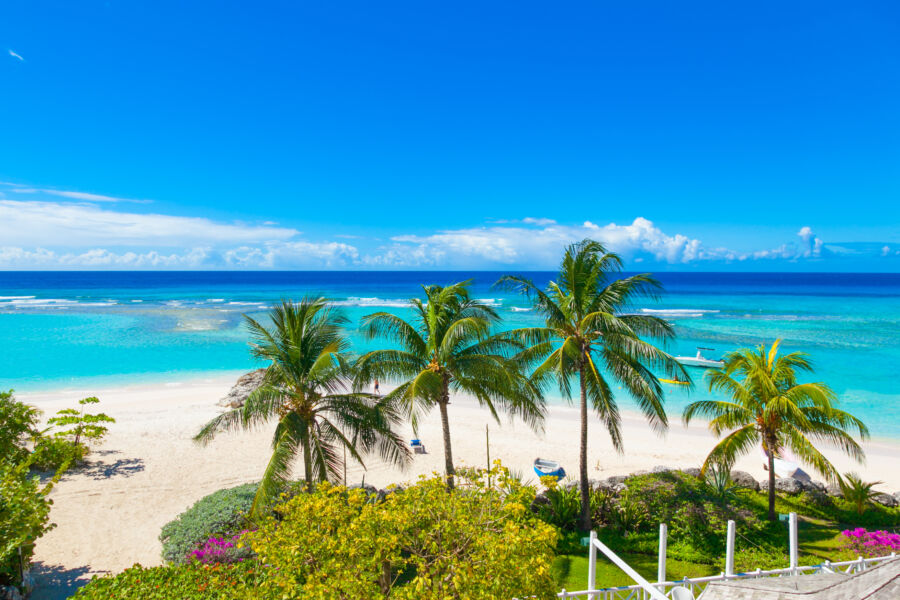
Despite being Caribbean islands, St. Lucia and Barbados offer dramatically different landscapes. Their geographical features shape everything from tourism experiences to local culture.
Location and Size

St. Lucia and Barbados sit in the eastern Caribbean Sea, with both islands part of the Lesser Antilles chain. St. Lucia measures approximately 616 square kilometers, making it about 1.4 times larger than Barbados, which covers around 430 square kilometers.
Despite their relative proximity, these small islands have distinct locations. Barbados is the easternmost Caribbean island, sitting alone in the Atlantic Ocean. St. Lucia lies further west, nestled among the Windward Islands chain.
Both islands enjoy tropical climates typical of the Caribbean region, with warm temperatures year-round. Their positions affect weather patterns, with Barbados generally experiencing less rainfall than its mountainous neighbor.
Terrain and Landscapes
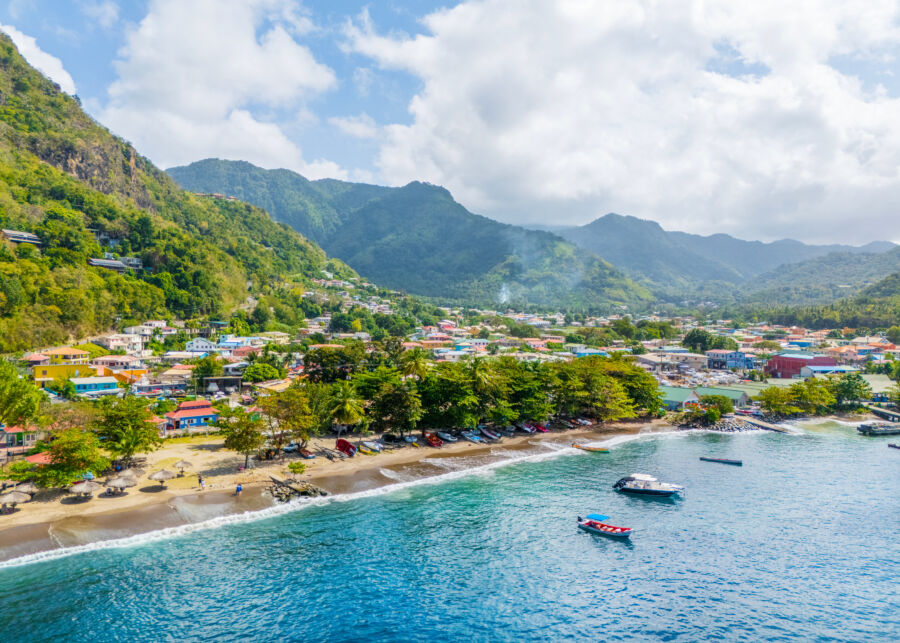
The terrain differences between these islands couldn’t be more striking. Barbados features a relatively flat landscape with gentle rolling hills. The island’s highest point reaches only about 340 meters above sea level. This flat terrain makes Barbados extremely easy to navigate and explore.
St. Lucia, in contrast, boasts dramatic mountainous terrain dominated by the iconic Piton Mountains. These twin volcanic peaks rise majestically from the sea and are recognized as a UNESCO World Heritage site. The island’s interior contains lush rainforests, waterfalls, and varied ecosystems created by its volcanic origin.
The geographical contrast creates different experiences for visitors. St. Lucia’s rugged landscape offers hiking, rainforest adventures, and spectacular viewpoints. Barbados’s more navigable terrain provides easier access to beaches and attractions.
Cultural Insights

St. Lucia and Barbados offer rich cultural experiences shaped by their unique histories and traditions. Each island has preserved its heritage while developing distinctive cultural identities that visitors can experience through historic sites, local customs, and vibrant celebrations.
Historic Significance

St. Lucia’s culture reflects its complex past of changing hands 14 times between the British and French. This has created a unique blend where French Creole patois is still widely spoken alongside English. The island’s cultural landscape features historic sites like Pigeon Island National Park, where you can explore military ruins and learn about the island’s strategic importance during colonial conflicts.
Barbados, often called “Little England,” has maintained stronger British influences throughout history. The capital, Bridgetown, and its Garrison are UNESCO World Heritage sites, showcasing well-preserved colonial architecture and military structures. Unlike St. Lucia, Barbados was under continuous British rule from 1627 until independence in 1966, resulting in deeper English cultural roots.
Festivals and Events
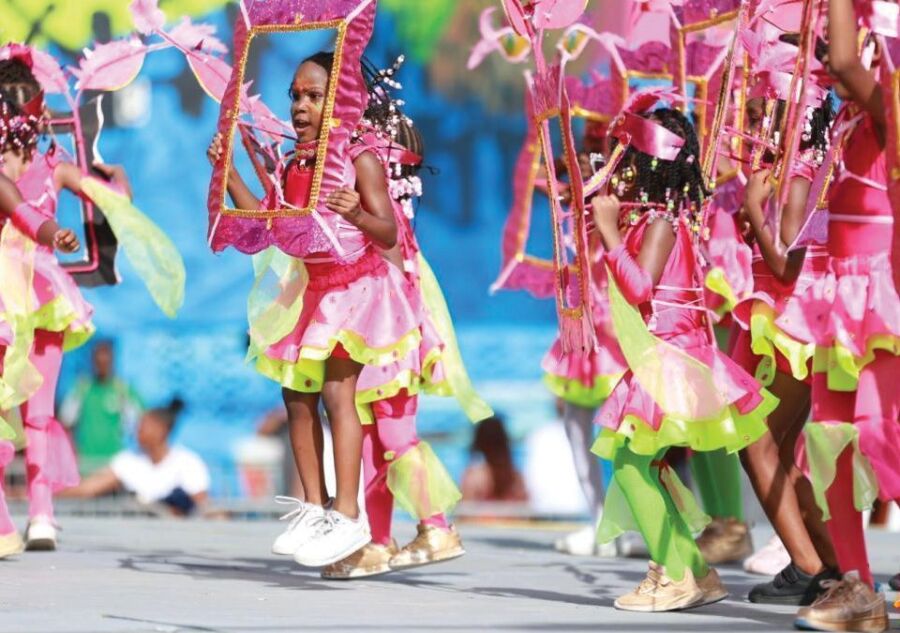
The highlights of St. Lucia’s festival calendar include the vibrant St. Lucia Jazz Festival in May and the colorful St. Lucia Carnival in July. The La Rose and La Marguerite festivals showcase the island’s flower societies, a tradition dating back to plantation days with competitive singing, dancing, and elaborate costumes.
Barbados’ Crop Over Festival is the island’s biggest cultural celebration. Running from May to August, it originally marked the end of the sugar cane harvest but has evolved into a massive carnival with calypso competitions, craft markets, and the grand finale, the “Kadooment Day” parade. The island also celebrates the Holetown Festival in February, commemorating the first British settlement in 1627.
Both islands feature regular fish fries, where visitors can sample local cuisine and mingle with residents in a relaxed atmosphere.
Travel Essentials

Preparing for a trip to St. Lucia or Barbados requires careful planning and specific items for Caribbean island life. Both destinations have unique needs based on their activities, climate, and social scenes.
Best Time to Visit
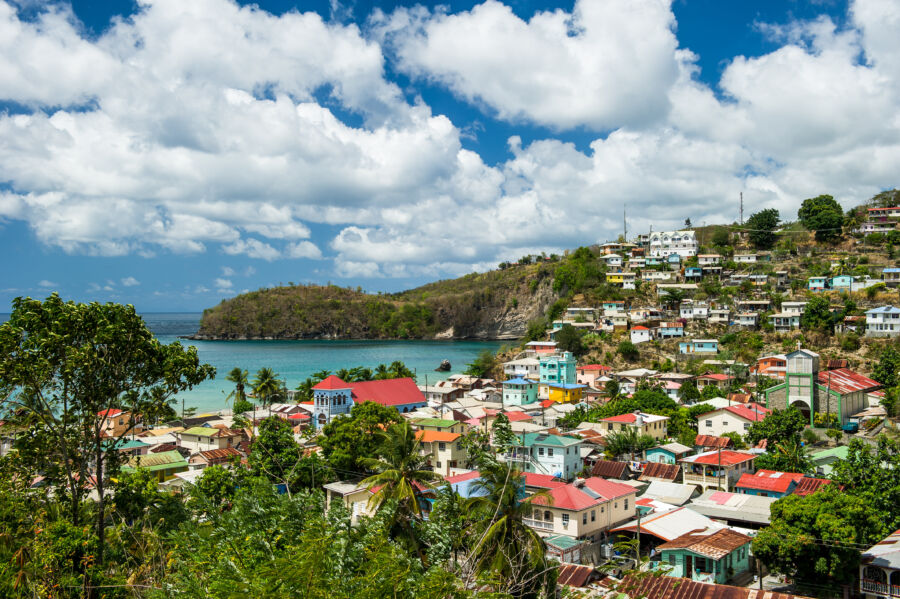
St. Lucia and Barbados both shine during the dry season, which runs from December to April. These months offer sunshine, lower humidity, and minimal rainfall—perfect for beach days and exploring. Prices peak during this time, especially around Christmas and New Year’s.
May to June provides an excellent balance with fewer tourists, good weather, and better hotel rates on Booking.com. The islands differ slightly in hurricane risk—Barbados sits at the edge of the hurricane belt and typically experiences fewer direct hits than St. Lucia.
September and October bring the highest rain chances to both islands. If you’re budget-conscious, this off-season period offers significant savings, though prepare for afternoon showers.
Accommodation Options

St. Lucia specializes in luxury resorts nestled into its dramatic landscape. The iconic Jade Mountain and Ladera offer open-air rooms with stunning Piton views. All-inclusive options like Sandals Grande St. Lucian include comprehensive packages with multiple restaurants and activities.
Barbados presents more diverse lodging choices. The prestigious Sandy Lane represents the ultimate luxury on the West Coast. The South Coast features mid-range hotels and apartment rentals ideal for independent travelers searching for various options on KAYAK.
Both islands offer villa rentals, but Barbados generally provides more affordable accommodations across all categories. St. Lucia tends to command premium prices for its unique settings and views.
Food and Dining Experience

St. Lucia’s cuisine blends Creole, French, and West Indian influences. Fresh seafood dominates menus, particularly mahi-mahi and conch. Don’t miss the national green fig (unripe banana) and saltfish dish. Local restaurants in Rodney Bay and Soufrière offer authentic island flavors at reasonable prices.
Barbados calls itself the “Culinary Capital of the Caribbean” with good reason. The island combines British traditions with Caribbean ingredients. Try flying fish and cou-cou (cornmeal and okra), the national dish. Oistins Fish Fry delivers a lively, authentic experience on Friday nights with grilled seafood and local music.
Both islands feature high-end dining, but Barbados offers more variety across price points. St. Lucia’s best restaurants often exist within resorts, while Barbados has more standalone establishments along its west coast.
See Related: Barbados vs Jamaica: Key Differences to Know Before Booking Your Caribbean Getaway
Activities and Attractions
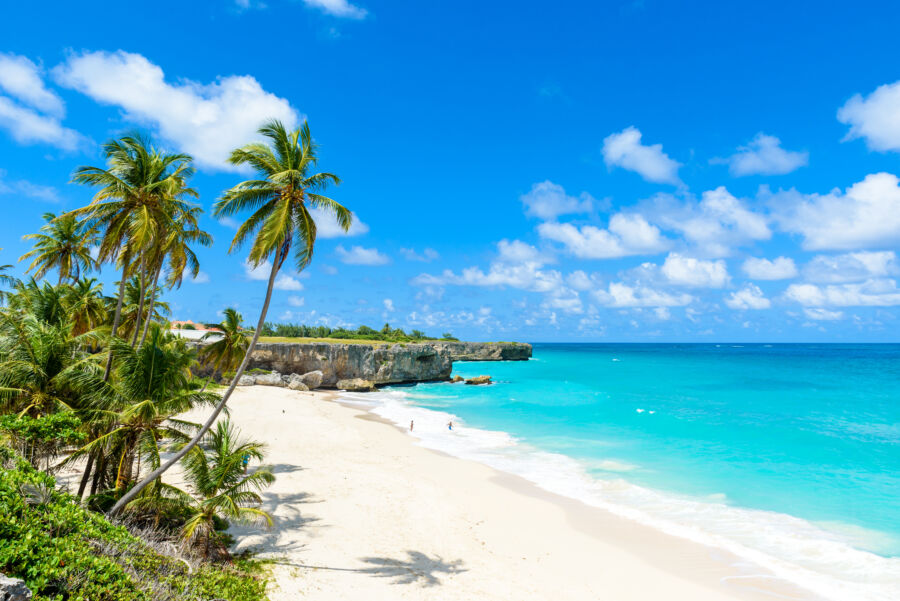
Both islands offer incredible experiences but cater to different types of travelers. St. Lucia shines with its dramatic landscapes and adventure opportunities, while Barbados delivers classic Caribbean beach experiences with bustling entertainment options.
Beaches and Water Activities
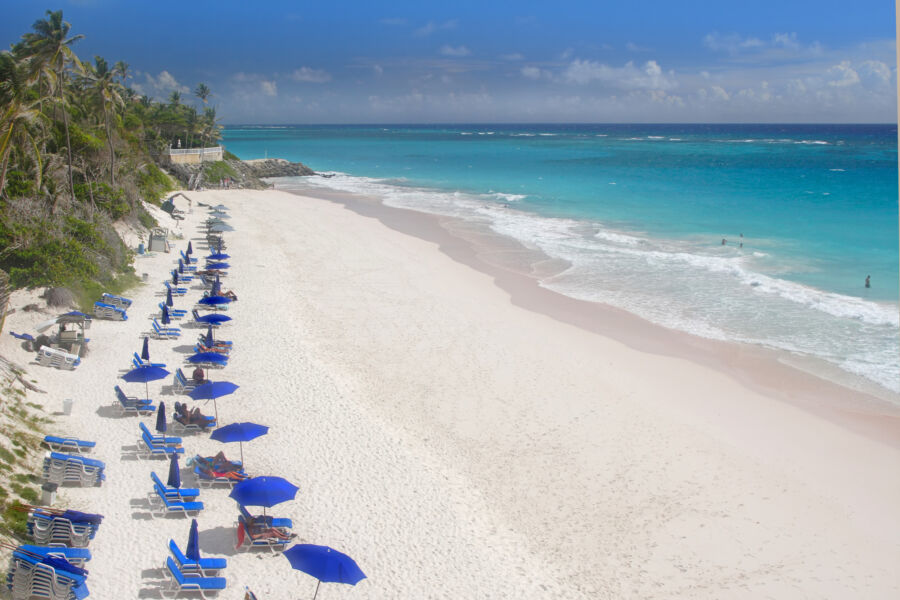
Barbados is famous for its pristine beaches with powdery white sand and calm turquoise waters. Crane Beach, located on the East Coast, consistently ranks among the world’s best beaches with its pink-tinged sand and impressive waves. The west coast (often called the “Platinum Coast”) offers calmer waters perfect for swimming and water activities.
St. Lucia’s beaches feature a mix of golden and volcanic black sand. While beautiful, they aren’t as numerous or accessible as those in Barbados. Marigot Bay stands out with its sheltered location and stunning palm-fringed beauty.
Both islands deliver incredible underwater experiences for snorkeling and diving enthusiasts. Barbados has exceptional visibility and well-preserved coral reefs, particularly along its west coast. St. Lucia’s waters showcase dramatic underwater topography with vibrant marine life around Anse Chastanet.
Adventure and Nature Excursions
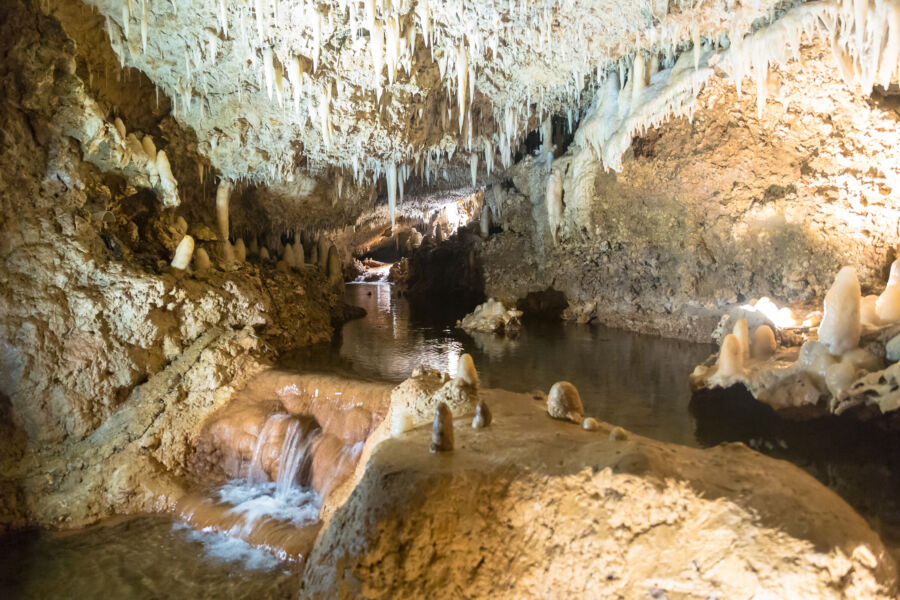
St. Lucia excels for nature lovers and adventure seekers. The island’s iconic Piton mountains offer challenging hiking trails with breathtaking views. The interior rainforest features ziplines, ATV tours, and bird-watching opportunities rarely found elsewhere in the Caribbean.
One of St. Lucia’s most unique attractions is its drive-in volcano and sulfur springs—the only such experience in the Caribbean. Visitors can drive to the edge of bubbling mud pools and take therapeutic mud baths.
Barbados offers more modest natural attractions but still delivers excellent adventure excursions. Harrison’s Cave tops the list with its crystallized limestone formations and underground streams. Animal lovers appreciate the Barbados Wildlife Reserve, where green monkeys roam freely.
Island jeep safaris in Barbados provide access to scenic spots that regular vehicles can’t reach, especially along the rugged east coast.
Entertainment and Nightlife
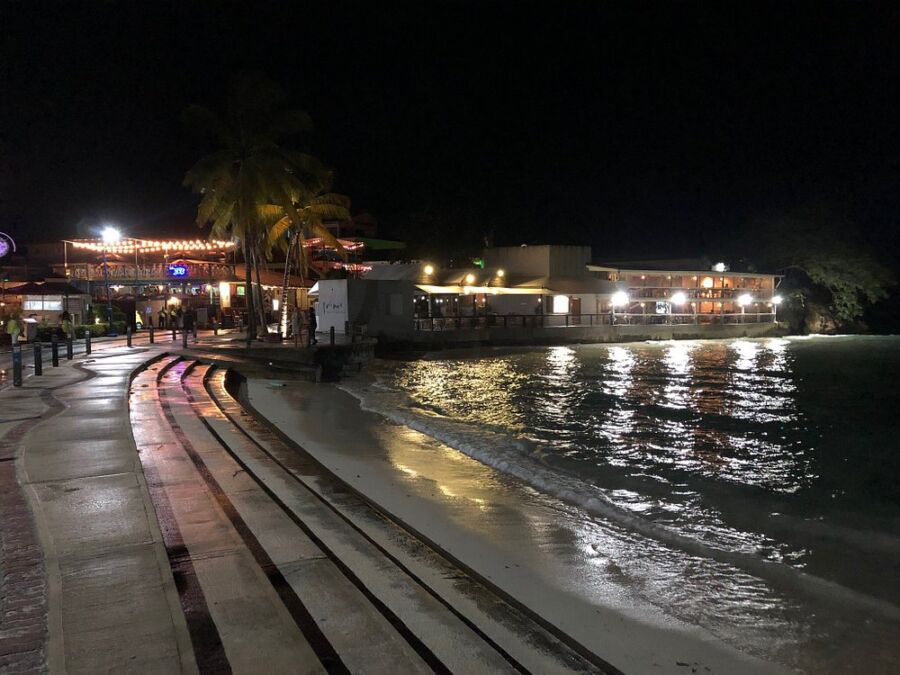
Barbados wins handily for entertainment options and vibrant nightlife. The St. Lawrence Gap area pulses energy as restaurants, bars, and clubs stay open late at night. Live music featuring calypso and reggae creates an authentically Caribbean atmosphere.
A Friday night fish fry at Oistins is a must-do Barbadian experience. Locals and tourists mix while enjoying fresh seafood and dancing to island rhythms. Rum distillery tours are another highlight, especially the historic Mount Gay Rum facility.
St. Lucia offers a more subdued nightlife experience focused on resort entertainment and a few local hotspots. Gros Islet’s weekly street party delivers authentic local flavor with food vendors, music, and dancing. Rodney Bay Village houses most of the island’s restaurants and bars.
Cultural performances featuring Caribbean music and dance can be found on both islands, though Barbados offers more variety and frequency of events.
Unique Experiences
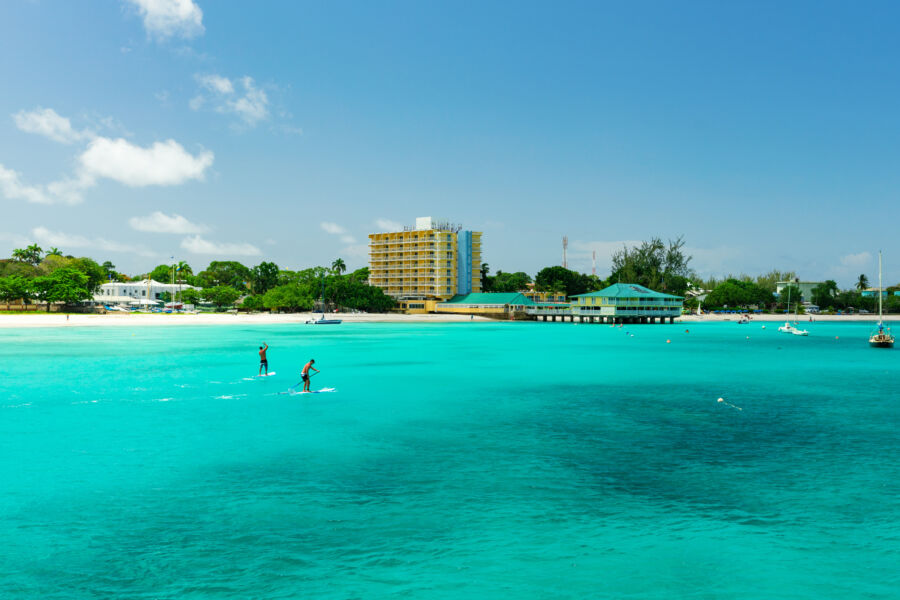
Both islands offer distinct activities that go beyond just beaches and resorts. From local cuisine to sporting events and cultural offerings, travelers can discover authentic Caribbean experiences unique to each destination.
Cuisine and Spirits
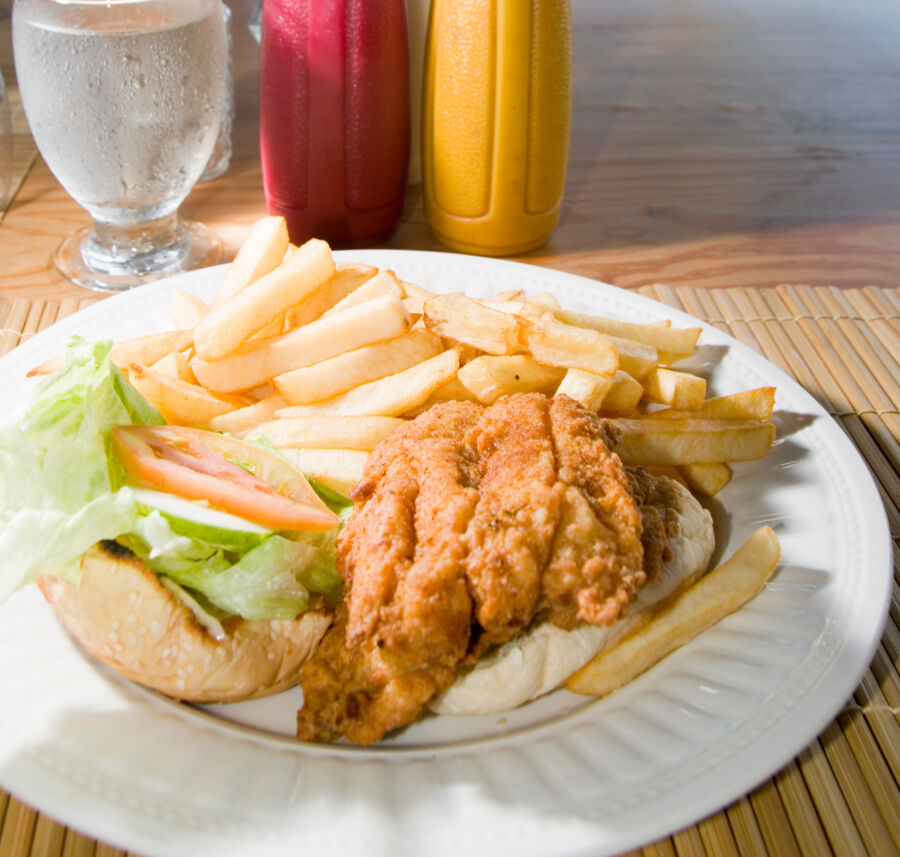
St. Lucia’s food scene blends Creole, French, and West Indian influences. The island’s signature dish is green fig and saltfish (unripe bananas with salted cod), often served for breakfast. Local restaurants frequently feature fresh catches like mahi-mahi, and red snapper prepared with island spices.
St. Lucia also produces Chairman’s Reserve rum, which has won international awards. Plenty of beachside spots serve rum punches with a distinctly St. Lucian twist.
Barbados, meanwhile, is often called the “culinary capital of the Caribbean.” The national dish is flying fish and cou-cou (cornmeal and okra). Bajan cuisine heavily features seafood, with flying fish sandwiches being a popular street food.
Barbados is also the birthplace of rum, with Mount Gay Distillery dating back to 1703. The Friday night Oistins Fish Fry is a must-visit for authentic Bajan seafood and the local atmosphere.
Sports and Recreation
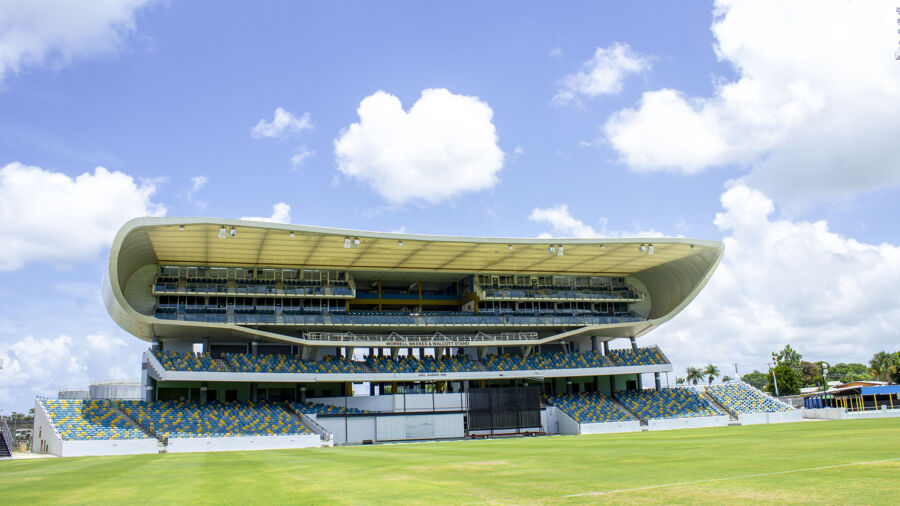
Cricket dominates the sporting scene in Barbados. The legendary Kensington Oval hosts international matches and is a hallowed ground for cricket fans. If you’re lucky to catch a game there, you’ll experience the passionate Bajan cricket culture firsthand.
Water sports thrive on both islands. Barbados offers world-class surfing on its east coast, particularly at Soup Bowl in Bathsheba. The calm west coast is perfect for paddleboarding and snorkeling.
St. Lucia’s mountainous terrain creates hiking opportunities not found in flatter Barbados. The iconic Piton Mountains offer challenging trails with breathtaking views. The island also features excellent dive sites, especially around Anse Chastanet.
Sailing enthusiasts flock to both islands, but St. Lucia’s Atlantic Race in January draws international competitors. Zip-lining through St. Lucia’s rainforest canopy provides an adrenaline rush with stunning scenery.
Arts and Music

St. Lucia’s vibrant arts scene is showcased during its annual Jazz Festival, which attracts international performers and thousands of visitors. The island’s artistic heritage blends African, French, and British influences, creating a unique cultural identity.
Local craft markets in Castries display handmade jewelry, batik textiles, and wood carvings. St. Lucian artists often draw inspiration from the island’s dramatic landscapes and colonial history.
Barbados boasts a rich musical heritage, with calypso and soca music playing everywhere. The annual Crop Over festival transforms the island with colorful costumes, dancing, and music. This celebration of the end of the sugar cane harvest culminates in the Grand Kadooment parade.
Speightstown and Bridgetown feature galleries showcasing Bajan artists’ work. The Barbados Museum provides insight into the island’s cultural evolution from indigenous settlements through colonial times to independence.
See Related: Most Breathtaking Places to Visit in the World
Practical Information

When choosing between St. Lucia and Barbados for your Caribbean getaway, several practical matters can influence your decision. Both islands have unique transportation, healthcare, and safety characteristics worth considering before booking your trip.
Traveling Between Islands

Getting from St. Lucia to Barbados isn’t too difficult. Direct flights between the islands take about 45 minutes and run several times daily. LIAT airline handles most of these inter-island routes, though schedules can change seasonally.
St. Lucia’s main gateway is Hewanorra International Airport in the south, which means you’ll need to plan for additional travel time to reach northern resorts. Barbados has a more central airport location, making transfers to most accommodations quicker.
Once on either island, transportation differs notably. Barbados is flatter and easier to navigate, with a reliable bus system and well-maintained roads. Meanwhile, St. Lucia’s mountainous terrain makes getting around more challenging but offers breathtaking scenery.
Taxis are available on both islands but are more expensive in Barbados. If you plan to explore extensively, consider renting a car in Barbados.
Safety and Health
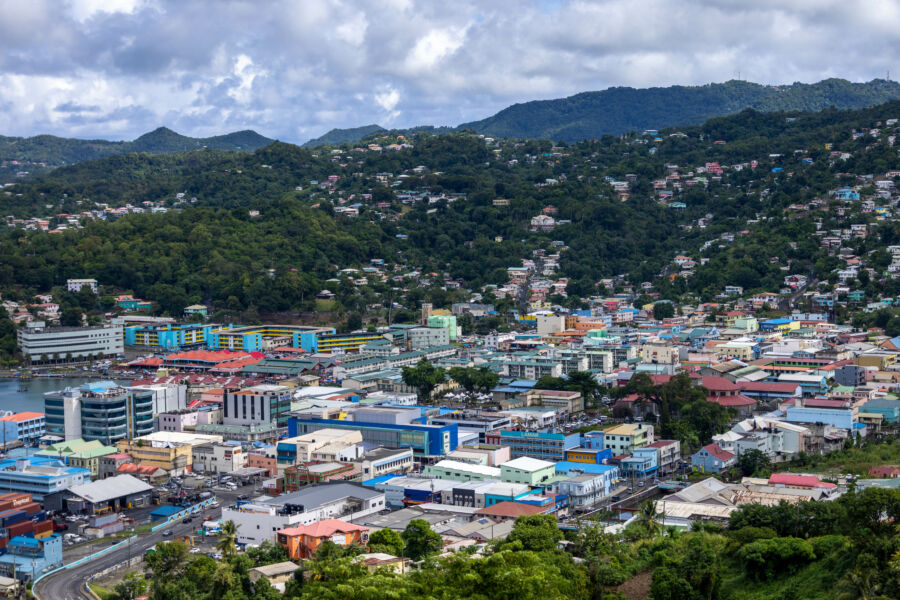
Both islands are relatively safe for tourists, but normal precautions should be taken. Barbados generally has a lower crime rate than St. Lucia, particularly regarding serious incidents affecting visitors.
St. Lucia has seen occasional reports of petty theft in tourist areas. On either island, it’s advisable to secure valuables and avoid isolated areas after dark.
Barbados’s healthcare facilities are more advanced and numerous than those in St. Lucia. Barbados boasts the Queen Elizabeth Hospital with emergency care, while St. Lucia’s medical facilities are more limited outside major towns.
Travel insurance covering medical evacuation is recommended for either destination, but especially for St. Lucia, where you might need treatment off-island for serious conditions.
Both islands require protection against mosquito-borne illnesses during certain seasons. Pack insect repellent and sunscreen regardless of which island you choose.
Natural Wonders
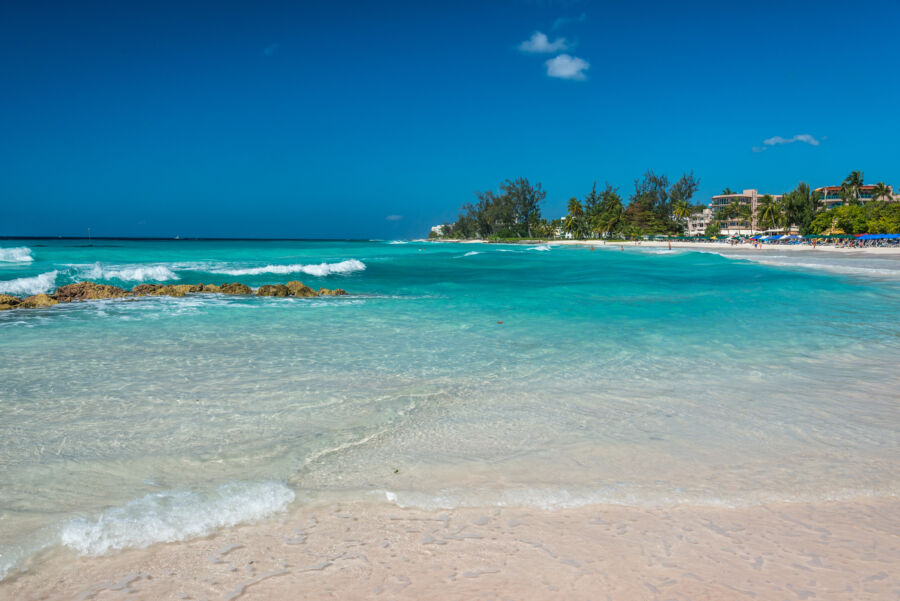
When compared, St. Lucia and Barbados’ natural features show striking differences. St. Lucia offers dramatic landscapes with lush rainforests, while Barbados boasts pristine beaches and incredible marine environments.
Protected Areas and Ecology

St. Lucia’s ecosystem is remarkably diverse, with extensive rainforests covering much of the island. The Edmund Forest Reserve protects rare parrot species and exotic plants you won’t find in Barbados. The island’s volcanic origin has created rich soil that supports incredible biodiversity.
Barbados takes a different approach to conservation. The island focuses on marine protection programs, particularly for its beautiful coral reefs and sea turtle populations. Barbados’s Folkestone Marine Park offers protected areas where sea turtles nest and vibrant reef systems thrive.
Both islands have committed to environmental protection, but St. Lucia has more plant and animal species due to its varied terrain and rainforest habitat. Barbados compensates with excellent ocean conservation efforts and cleaner beaches.
Breathtaking Views

St. Lucia wins handily in the scenery department with its iconic Piton Mountains. These dramatic twin peaks rise majestically from the sea, creating postcard-perfect views from almost anywhere on the island’s southwest coast. Visitors can hike Gros Piton for panoramic vistas of the Caribbean.
The island’s mountainous terrain creates spectacular waterfalls hidden throughout the rainforest. Diamond Falls and Toraille Waterfall offer refreshing swimming spots surrounded by lush vegetation.
Barbados presents a different kind of beauty with its crystal clear waters and pristine beaches. The island’s West Coast beaches feature calm turquoise waters and powdery white sand. Animal Flower Cave on the northern tip offers unique views where you can watch powerful Atlantic waves crash against limestone cliffs.
The “Scotland District” in eastern Barbados provides the island’s most dramatic landscapes with rolling hills and scenic cliffs, though they can’t match St. Lucia’s volcanic splendor.
See Related: Jamaica vs St. Lucia: Stunning Differences to Know Before Your Caribbean Escape
Frequently Asked Questions

Travelers often have specific questions when deciding between St. Lucia and Barbados for their Caribbean vacation. Both islands offer distinct experiences that cater to different preferences and travel styles.
How do the travel experiences differ between St. Lucia and Barbados?
St. Lucia offers a more rugged, nature-focused experience with its dramatic Piton mountains, lush rainforests, and volcanic beaches. Due to its mountainous terrain and winding roads, getting around St. Lucia takes longer.
Barbados provides a more accessible experience with its flatter landscape and well-developed infrastructure. The island is easier to navigate and features stunning white sand beaches with crystal clear waters that St. Lucia can’t match in some areas.
Both islands offer excellent water activities, though the diving experiences are surprisingly similar. Both offer short boat rides to reefs with 30-60 feet depths and personable dive masters.
What are the safety considerations when comparing St. Lucia and Barbados for a vacation?
Both islands are relatively safe for tourists, but Barbados generally has lower crime rates. The Barbadian government invests heavily in tourism safety, with visible police presence in popular areas.
While still safe for visitors, St. Lucia requires slightly more awareness, especially in Castries and when venturing off resort properties. Sticking to tourist areas and using common-sense precautions is usually sufficient.
Neither island poses significant health risks beyond the usual tropical concerns like sun exposure and staying hydrated. Both have medical facilities, though Barbados offers superior healthcare infrastructure.
Which destination, St. Lucia or Barbados, is typically more budget-friendly for travelers?
St. Lucia tends to be more affordable for accommodations and some activities, especially in its southern region. The island offers a wider range of budget-friendly options, from guesthouses to mid-range hotels.
Food costs can be lower in St. Lucia, particularly if you’re willing to eat at local establishments rather than tourist restaurants. Street food and local markets provide tasty, authentic meals at reasonable prices.
Barbados generally commands higher prices for comparable accommodations and dining experiences. The island caters more to luxury travelers, though budget options exist, especially during shoulder seasons.
Can you compare the luxury travel opportunities available in Barbados to those in St. Lucia?
Barbados excels in luxury with its high-end resorts, fine dining establishments, and exclusive experiences. The west coast, often called the “Platinum Coast,” is home to world-class luxury properties and restaurants.
Designer shopping, championship golf courses, and upscale marinas give Barbados an edge for travelers seeking refined experiences. The island hosts many celebrities and wealthy visitors, especially during peak season.
St. Lucia offers a different luxury, focusing more on exclusive natural settings and boutique experiences. Jade Mountain and Sugar Beach provide stunning views of the Pitons and luxurious amenities.
What unique cultural experiences can one expect when visiting St. Lucia compared to Barbados?
Barbados boasts a vibrant cultural scene deeply influenced by its British colonial history. The island celebrates this heritage while embracing its Caribbean identity through festivals, music, and cuisine.
Visitors to Barbados can experience cricket matches, rum distillery tours, and the Friday night fish fry at Oistins. The island’s literary and artistic traditions are also evident in its museums and cultural institutions.
St. Lucia offers a blend of French and British influences alongside its strong African heritage. The island’s Creole language, folk traditions, and cuisine reflect this unique cultural mixture.
How do the landscapes and natural attractions of St. Lucia contrast with those of Barbados?
St. Lucia wins for sheer natural beauty with its iconic Piton mountains, volcanic features, and dramatic coastlines. The island’s interior is dominated by rainforests, waterfalls, and thermal springs that offer adventurous excursions.
In St. Lucia, you can find hiking opportunities everywhere. You can take on the challenging Gros Piton climb or go on gentler nature trails through the island’s protected forests. The Sulphur Springs volcano area offers unique mud baths and hot springs.
Barbados presents a more pastoral landscape with rolling hills, sugarcane fields, and limestone caves. Harrison’s Cave is a standout attraction, featuring underground streams and impressive formations.

